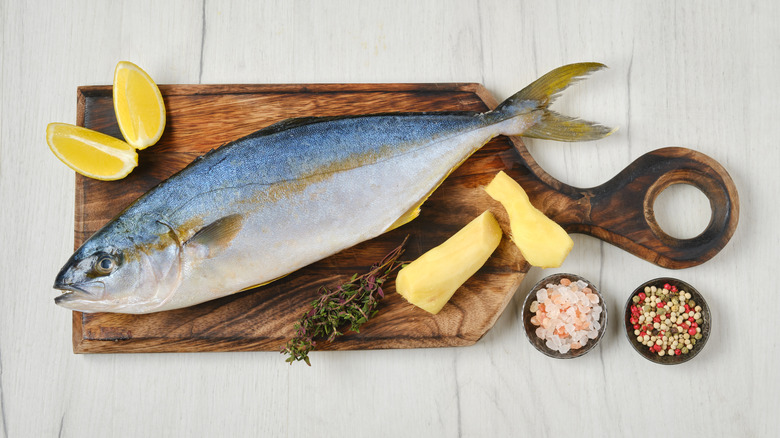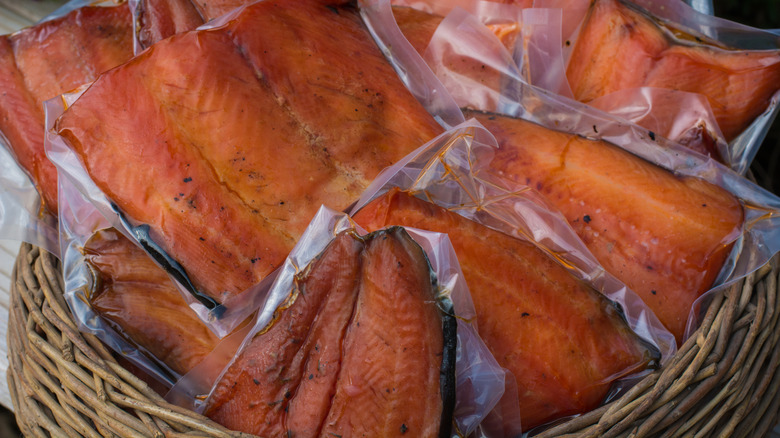Why King Salmon Is So Expensive
Among the different types of salmon you could choose to cook, king salmon is the priciest. According to Quality Seafood Delivery, the fish can cost anywhere from $30 to $70 per pound on average when wild-caught. For comparison, a King salmon fillet from a Whole Foods in Los Angeles costs $29.99 per pound, while an Atlantic salmon fillet costs $11.99 per pound. (Keep in mind that prices can vary over time and across stores.) Part of what makes this food so highly prized is how rare and tasty it is.
Also known as Chinook, this fish has the most fat (and largest flake) of all salmon, giving it a rich, buttery flavor. Plus, it's massive, reaching up to nearly 5 feet long and weighing around 129 pounds (the average is around 3 feet long and 30 pounds). Different estimates suggest that it makes up between 0.7% and less than 0.5% of the world's salmon.
Unfortunately, overfishing, habitat destruction, and climate change have significantly reduced the population since the 1980s. Conservation efforts have benefited the fish in some locations, but several species of Chinook are listed as endangered or threatened, while even more populations were under consideration to be listed in 2024. King salmon is farmed in some parts of the world, especially New Zealand, but it isn't easy to do, as the fish need lots of space and icy waters.
King salmon fishing is heavily regulated
Fishing for king salmon is not an all-you-can-catch scenario. There are a lot of rules meant to protect natural populations. These regulations vary by waterway and region. However, one of the most popular places is Alaska.
Alaska's sport fishing regulations limit anglers to how many salmon they can catch per day, season, and annually. Sometimes there are size restrictions as well. Plus, anything caught during one season applies to others — for example, if you catch one in February and come back later in the year, you may have already reached your yearly limit. These numbers are often pretty low — as little as one to three per year. Anglers must purchase a fishing license with a special king salmon stamp, and many areas may even be restricted to king salmon fishing. However, emergency orders are often released to update the rules, so always check for those before you hit the waters.
Commercial fishing operations are also subject to strict regulations, including specific rules about when and where they can fish and what gear is allowed. These rules can change based on the fish population and other factors. This helps prevent overfishing of king salmon but also contributes to its cost. Regardless, the truth about salmon is that Chinook is a delicacy and in high demand, so these prices likely aren't going down anytime soon.

